In the dark after midnight, it was like rush hour in the northern Gaza Strip.
Thousands of Palestinian workers had heard that Israel was to open its side of the Erez crossing at dawn after 12 days of closure in response to renewed violent protests by the separation fence with Israel in the east of the impoverished territory.
It was the news that Amjad Hassan, a builder who is the sole breadwinner for 13 relatives had been praying for. “We work on a daily wage, if we don’t work, we don’t feed our families,” he explained.
A father-of-five, Nabil said the crossing closure had been “the greatest disaster” for him, as he accrued a large debt to the middleman who had arranged his Israeli permit while he was unable to work to pay it off. He had feared losing his coveted permit altogether.
Some 18,000 Gazans are currently authorised to work in Israel, giving them respite from the dire economic situation at home. Dramatic photographs showed many waiting at the crossing point overnight. Some slept in corridors, on the floor, even on a baggage scanner in a reception hall belonging to Hamas, the Islamist militant group which governs Gaza.
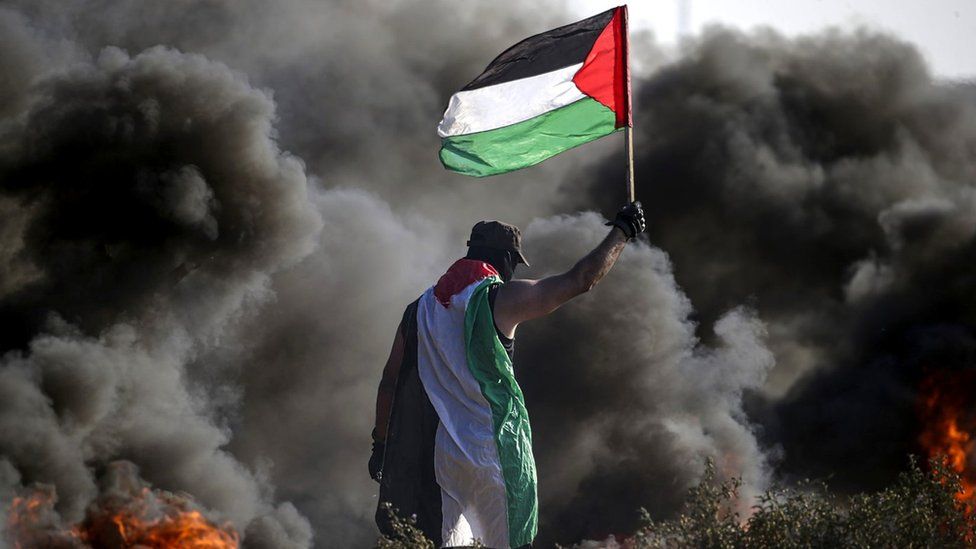
After a period of relative calm in Gaza, demonstrations restarted along its boundary fence earlier this month, with hundreds of young Palestinians turning out most days to confront Israeli soldiers. The rallies have been approved, even encouraged, by Hamas.
Protesters have burnt tyres, thrown stones and explosive devices, and released incendiary balloons and kites into southern Israel, which have set fire to farmland and scared Israeli communities living nearby. Some have shot at soldiers, the Israeli military says. It has responded with tear gas and live fire.
One Palestinian at the fence was shot dead by Israeli forces and on another occasion, six were killed, apparently by a malfunctioning Palestinian explosive device.
At one point earlier this week, the Israeli military responded to what it called the “violent riots” using a drone, helicopter, and tank to hit several targets in Gaza, including Hamas militant posts. There were no reports of any casualties.
Hamas says that young Palestinians have organised events in response to the tough living conditions in Gaza, which has been under a tight Israeli-Egyptian blockade for the past 16 years, since the group took over the territory. It suggests they have also been motivated by Israeli actions in the occupied West Bank and East Jerusalem.
Hamas spokesman Hazem Qassem told the BBC that it was “a unified picture of a national struggle in all arenas”.
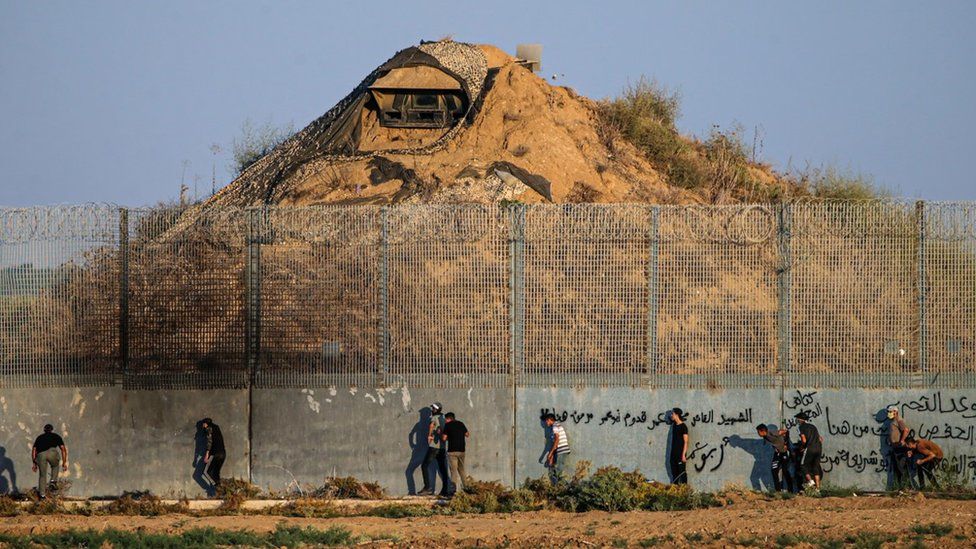
For Omar Shaban, a political economist in Gaza, it is no surprise to see young people turning out by the perimeter fence.
“The situation in Gaza is boiling,” he says. “People who go to the border are frustrated by the lack of opportunity. Two thirds of Gazans are aged under 30, who don’t have jobs and they can’t travel and so they express their anger.”
However, for many Palestinians the demonstrations bring back painful memories of the Hamas orchestrated weekly mass protests between 2018 and 2019, known as the “Great March of Return”.
Back then, Israeli snipers killed more than 300 Palestinians, according to the Gaza health ministry. Thousands more were injured – with hundreds losing their limbs after being shot. Israel’s military said it opened fire at people trying to infiltrate its territory.
On TikTok, powerful videos have been put up by Gazans who were maimed in the earlier rallies and are now urging young people not to go to the new ones.
One amputee claims he was deceived by the organisers five years ago. “Whenever they feel that people are against them, they rush to send them to the border to vent their anger away from them,” he says. “We have nothing in this country. They are the ones making money and we are losing our limbs.”
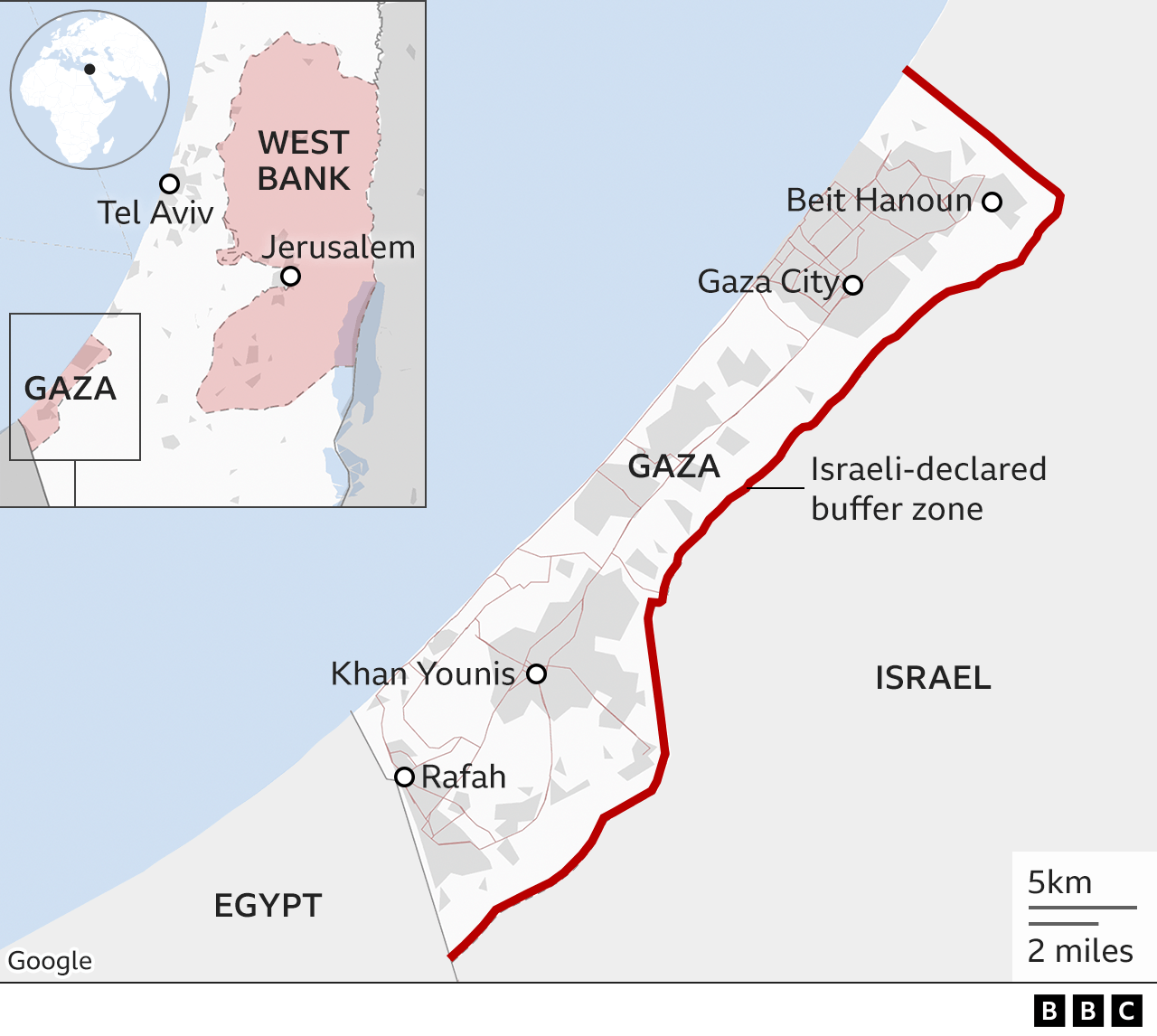
With the renewal of the protests, albeit on a small-scale, there is a perception that Hamas has been trying to distract attention from its own economic woes but also to gain leverage in indirect talks with Israel, being led by Egypt, Qatar, and the UN.
A senior official, familiar with the negotiations, told the BBC that ahead of the Erez crossing (also known as Beit Hanoun) opening for Palestinian workers, an agreement was reached to stop the demonstrations for two weeks.
However, there are difficult outstanding issues to resolve as Hamas struggles to balance its practical responsibilities as a governing power in Gaza, in the midst of a deep financial crisis, while sticking to its militant ideology.
Just before the unrest by the fence restarted, Hamas announced that it was slashing the wages of its civil servants by half. Recently, Qatar, which helps pay the salaries under the terms of previous ceasefire understandings with Israel, has sent less money, for which Hamas blames Israel.
As part of the indirect talks with Hamas, Israel is understood to be offering more economic privileges if the group freezes its military activities – including carrying out attacks on Israelis in the West Bank.
This follows two shootings last month which killed three Israelis in Hawara and Hebron. On both occasions, Hamas went beyond expressing general support – its usual response – to claim that members of its armed wing, the Qassam Brigades, were responsible.
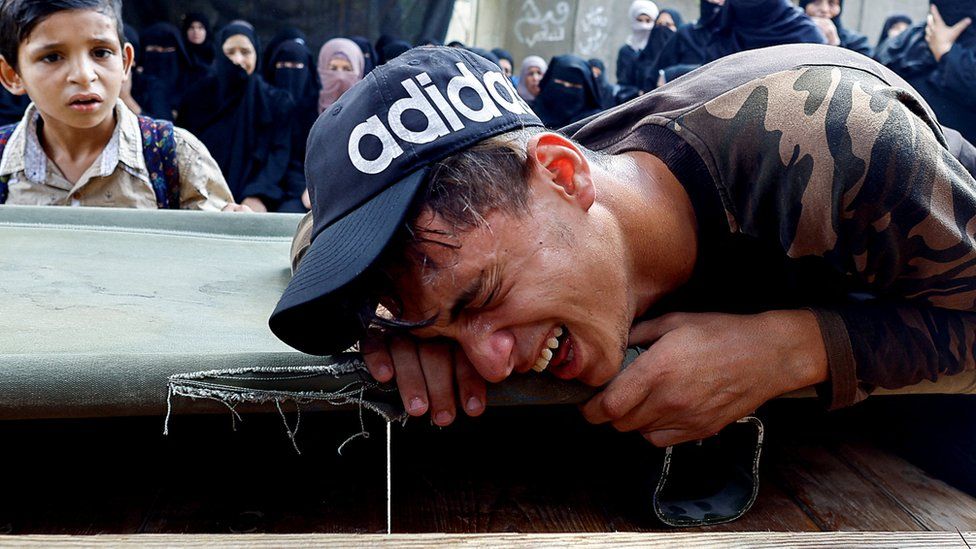
Israeli military commentator Or Heller says there has also been a significant increase in weapons and improvised explosive devices being transferred by Hamas to operatives in the West Bank, which is partly governed by its rivals in the Palestinian Authority.
“We are always seeing with Hamas efforts to maintain relative quiet in ‘Hamas-stan’, ‘the state of Hamas’ [in Gaza], and to export the terrorism to the West Bank,” he notes.
Up to now, Hamas has been refusing to make commitments connected to the West Bank, the BBC understands.
At a military ceremony on Wednesday, Israel’s Defence Minister, Yoav Gallant, warned that Israel was ready to step up its actions against Hamas in Gaza if necessary, referring to what happened in an Israeli offensive which lasted five days in May and decimated the leadership of a smaller militant group, Islamic Jihad.
“We don’t want an escalation [in fighting] and are not looking for a fight, but if we get to the point where we need to act, let ‘Operation Shield and Arrow’ from a few months ago be a reminder and an example for all terror groups about the capabilities of the IDF [Israel Defense Forces], Israel and its security apparatus,” Mr Gallant said.
During the May operation, some 33 people were killed in Gaza – including at least 12 civilians – and two civilians in Israel, one of whom was a Palestinian labourer.
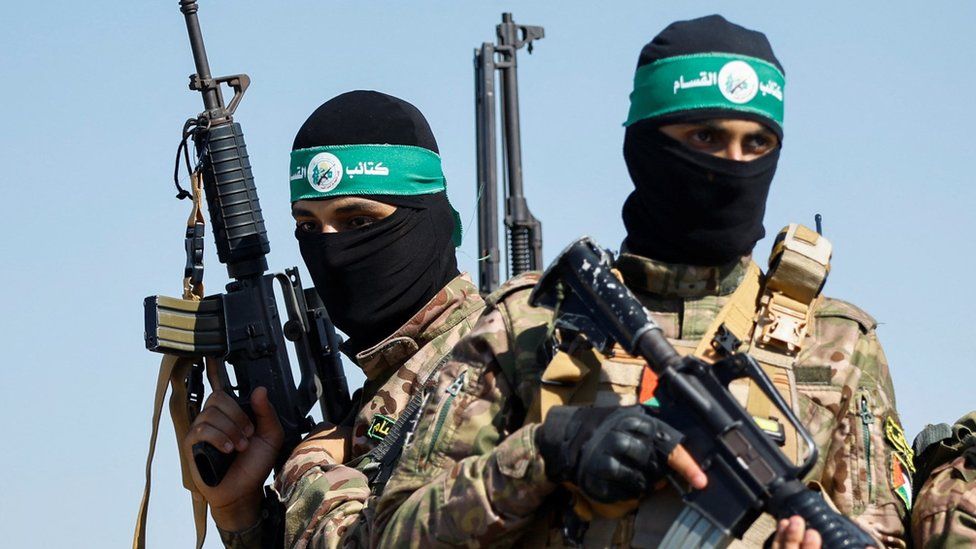
Back at the Erez crossing, there has been a scramble with Palestinian workers trying to make it out through the rigorous security checks to return to their jobs inside Israel. The crossing is due to temporarily close again this weekend due to the Jewish Sukkot holiday.
The Israeli military’s co-ordinator for the Palestinian Territories issued only a brief statement about its intentions. It read: “Continuation of the civil measures will be possible in accordance with security assessments and with the preservation of stable security.”
Amid the continuing uncertainty, the workers say they are just focusing on support for their loved ones. “Now my younger brothers can breathe a sigh of relief,” says Amjad, the builder, “our lives have been on hold.”



